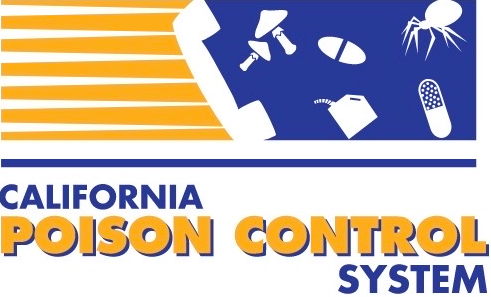By Alicia Minns, MD
Introduction
Over the last decade, there has been an explosion of novel psychoactive substances. Among these, are the “2C” compounds; the name referring to the chemical structure consisting of two carbon atoms between the phenyl and amine moieties. Synthetic designer hallucinogens gained popularity after the 1991 publication of Alexander Shulgin’s book, PIHKAL, A Chemical Love Story. PIHKAL, an acronym for “Phenethylamines I Have Known and Loved,” details the synthesis of over 200 mind-altering compounds including the “2C” series of hallucinogenic phenethylamines. There are numerous analogs of the 2C compounds and multiple cases have been reported detailing potentially fatal intoxications. Over the last 5 years, a new group of 2C compounds have emerged on the market, the N-methoxybenzyl-substituted phenethylamines (NBOMe). The three most frequently reported drugs in this series are 25I-NBOMe, 25C-NBOMe, and 25I-NBOMe, however several other drugs in this class have been reported in the scientific literature, especially by neurobiological research studies, as well as on internet web pages. Initially synthesized for research purposes, these drugs are potent serotonin 5HT2A receptor agonists, which confer hallucinogenic properties and are thought to be more potent than some of the conventional hallucinogens such as LSD. Internet-based drug user forums began to discuss 25I-NBOMe in early 2011 and interest has subsequently increased. Compared to previous 2C compounds, NBOMes have a significantly higher affinity at the 5-HT2A receptor. As a consequence, sublingual doses as low as 50 µg may produce psychoactive effects. In the United States, there are dozens of fatalities where NBOMe compounds have been implicated, either from acute toxicity or as a result of unpredictable violent behavior.
Case presentation
A 17-year old male with a history of substance abuse presented to the Emergency Department with confusion and agitation. His blood pressure was 170/94 mmHg, heart rate 140 beats per minute, and a temperature of 39°C. He was agitated, diaphoretic with mydriasis on exam. An ECG showed a narrow complex sinus tachycardia. He had a convulsion shortly after arrival and was intubated. He was treated with intravenous fluids and an IV midazolam infusion. He developed rhabdomyolysis with a peak creatine kinase of 23,100 U/L and acute kidney injury with a creatinine of 2.7 mg/dL, which resolved during his hospitalization. On hospital day 3, he regained consciousness and reported taking one pill of “NBOMe” that was given to him by a friend. A CT scan was normal. His urine drug screen was negative.
Questions
- What is the mechanism of action of NBOMe?
- Describe a typical clinical presentation of NBOMe intoxication?
- How is NBOMe intoxication best treated? with administration should the clinician consider before giving each agent ?
Epidemiology
Designer drug use is most prevalent among young adults, primarily males in their mid to late 20s. Those who use designer drugs tend to be single and have lower levels of education and income. Designer drug packaging is colorful and attractive, with enticing names for the products to attract younger individuals to try them. Designer drugs are sold without age restriction, which also makes them attractive to younger individuals. Widespread availability, including purchase via the Internet, has contributed to expanded use. Marketing designer drug products as “legal high” alternatives may contribute to the perception of greater safety or purity compared to traditional illicit drugs. Also, those who are subject to random drug testing in the workplace may be enticed by designer drug products, as many are not detected on the standard urine drug screen.
NBOMe compounds have been detected in Europe, North America and Japan. In September 2014, the United Nations Office on Drugs and Crime reported that 25I-NBOMe was the most frequently reported novel psychoactive substance, accounting for 43% of all cases (from 23 countries and territories that had reported to them) reported that year.
In the 2013 Global Drugs Survey, which includes participants mainly from the UK and USA, 22,289 participants were asked about their use of 25B-NBOMe, 25C-NBOMe and 25I-NBOMe. 582 (2.6%) of the respondents had previously used one of these NBOMe drugs with 25I-NBOMe being the most commonly used. Over half of the users were from the United States. NBOMes are often sold as “a legal alternative of lysergic acid diethylamide (LSD)” or as a research chemical “not for human consumption.” Its price ranges from about $7 to about $10.
In November 2013, the Drug Enforcement Agency placed all 3 NBOMe analogues (25I, 25B, and 25C) into schedule 1, making it illegal to manufacture, distribute, import/export, research, or possess these compounds.
Pathophysiology
Similar to LSD, NBOMes are frequently sold on a blotter paper, often adorned with unique artwork or colorful designs to indicate a particular brand or drug. NBOMes can be sold surreptitiously as LSD, not only because NBOMes produce similar psychologic and somatic effects as LSD, but also because the potency of NBOMes allows for the use of blotters.
Many potential routes of administration of the NBOMes have been reported of both a liquid and powder form, including inhalation of vapor, nasal insufflation, oral ingestion, sublingual/buccal administration, and intravenous injection. The most common use is oral/sublingual/buccal, but nasal insufflation is not unusual. Use of the drug generally occurs in a single administration of a small quantity, about 0.1 gram, or “cap.” Clinical effects can occur rapidly after nasal use and generally peak in 20 minutes. A wide duration-of-action range of 3-13 hours has been reported and resultant agitation may persist for days.
The action of NBOMes results from the fact that they are potent partial agonists for the serotonin 2A (5-HT2A) receptors. These receptors are implicated in the pathophysiology of depression and schizophrenia. Their stimulation is responsible for the hallucinogenic effects of many recreational drugs including lysergic acid diethylamide (LSD) and representatives of 2C-series.
Clinical presentation
The clinical features recorded are consistent with a psychostimulant toxidrome with additional serotonin toxicity. The former is commonly associated with other phenethylamines, for example, methamphetamine. Serotonin toxicity is because the N-benzyl substitution confers high affinity at 5HT2A receptors in the cerebral cortex.
Of reported cases/case series, central nervous system (CNS) dysfunction was predominant, with seizures, agitation, aggression, and visual and auditory hallucinations. When taken sublingually, the first effects are anecdotally described as unpleasant, including a metallic chemical taste along with a sense of numbness of the tongue and mouth, which can last up to an hour after the ingestion. Numbness of the tongue and mouth has been reported to be a key difference between blotter papers containing LSD and those containing NBOMe drugs. Users also describe a “body high” further characterized as a euphoric tingling sensation and a sense of stimulation, which can be uncontrollable. Body shakes and bruxism comparable to that seen with traditional stimulants such as MDMA (“Ecstasy”) can occur.
Autonomic dysfunction manifested by hyperthermia, tachycardia, and neuromuscular hyperexcitability, particularly clonus, were also commonly observed. The most common adverse effects were agitation, tachycardia, hypertension, mydriasis, delirium, hallucinations, seizures, tachypnea, and hyperthermia. The most common laboratory abnormalities seen are an elevated level of creatine kinase, leukocytosis, hyperglycemia, transaminitis, and elevated level of creatine.
Diagnosis
NBOMes are not a part of routine drugs-of-abuse screens available in hospital or other clinical laboratories. There are no rapid immunoassay screening tests or point-of-care devices that can detect the presence of NBOMes in urine specimens. Testing NBOMes in serum is typically not available in most hospitals. Presently, a few commercial reference laboratories offer a qualitative screen to identify the presence of 25I-NBOMe, 25C-NBOMe, and 25B-NBOMe in blood, serum, or urine samples. All published procedures for NBOMe analysis in biologic samples use high-performance liquid chromatography/mass spectrometry (MS) or high-performance liquid chromatography/MS/MS.
Treatment
No specific antidotes are available for NBOMes. Management of NBOMe ingestion should include aggressive fluid repletion and sedation using benzodiazepines. Activated charcoal is not useful unless there has been significant oral ingestion. Most nonpsychiatric symptoms appear self-limited and resolve within one to several days with supportive treatment. Unpleasant psychological effects of acute intoxication, such as anxiety, agitation, or paranoia may be managed with supportive treatment. Placing the distraught user in a quiet environment and maintaining gentle contact is often sufficient until the acute effects subside. Antipsychotics are second-line agents for agitation, due to the lowered seizure threshold with phenethylamine designer drugs. Sedation may be required if the patient is markedly agitated and at risk for harm to self or health-care staff.
Discussion of case questions
- What is the mechanism of action of NBOMe?
Answer: The NBOMe drugs are highly potent agonists at the 5HT2A receptor and are also agonists at the alpha-adrenergic receptor. Patients presenting with intoxication would be expected to exhibit serotonergic and sympathomimetic toxidromes. The clinical toxicity is often severe and fatalities associated with NBOMes have been reported. - Describe a typical clinical presentation of NBOMe intoxication?
Answer: The clinical presentation of the patients reported in the literature includes tachycardia, hypertension, hyperthermia, agitation, seizures and rhabomyolysis resulting in metabolic acidosis and kidney injury. - How is NBOMe intoxication best treated?
Answer: Patients should be managed with intravenous fluids and benzodiazepines, and mechanical ventilatory support where indicated. The aggressive use of sedatives to reduce the agitation is paramount.



